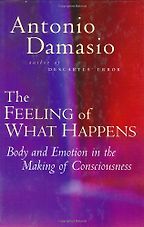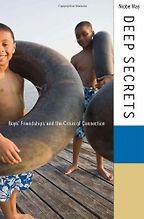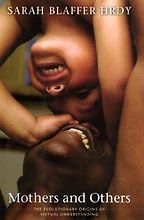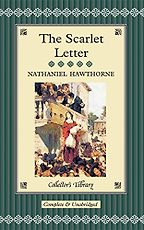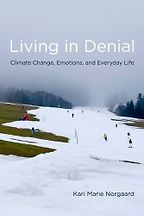Your latest publication sets the theme for your five books. Tell us about Joining the Resistance.
Joining the Resistance begins with the observation that relational strengths and emotional sensibilities that have long been associated with women are now recognised as basic human capacities. As humans, we are by nature responsive, relational beings, hard-wired for empathy and cooperation.
As someone interested in development, I found myself tracking these capacities in children and zeroing in on times when they are at heightened risk. Children for the most part have the ability – the emotional sensitivity and intelligence – to read the human world around them accurately, like the child in The Emperor’s New Clothes, who says that the emperor is naked.
“In dividing human qualities into masculine and feminine, sexism separates everyone from parts of themselves.”
What surprised me in the course of my research was how gender comes into play to silence girls’ honest voices and pressure boys to hide their emotional perceptiveness and vulnerability. In children, girls and boys, and also adults I saw evidence of a healthy resistance to losing these human capacities, and I wrote my book to encourage people to identify and join this resistance.
Let’s start with neuroscientist Antonio Damasio’s The Feeling of What Happens.
Damasio’s subtitle – Body and Emotion in the Making of Consciousness – says it all. In our bodies and our emotions, we register the feeling of what happens. What this means is that if we split our minds from our bodies and our thoughts from our emotions, we lose touch with what is going on around us. Damasio’s research provides a neurological basis for understanding how we register our experience. It explains the resistance I observed to making these splits, and also shows how we can come to lose what we know in our bodies and our emotions. How we can lose touch with our experience and tell false stories about ourselves.
The Feeling of What Happens highlights what psychologists call “dissociation” or splits in consciousness. Under normal conditions, our bodies and emotions pick up the music or the feeling of what happens, which then plays in our minds and thoughts. When we divorce our minds from our bodies or our thoughts from our emotions, we find ourselves at sea, unable to navigate the human emotional world.
Damasio distinguishes between core consciousness or a core sense of self, grounded in the body and in emotions, and “the autobiographical self”, meaning the self that is wedded to a story about itself. What I saw is how splits in consciousness can undermine our capacity to resist false authority by silencing the voice of the core self, and how gender norms that align reason with masculinity and emotion with femininity encourage and enforce these splits.
Have we seen consciousness through a veil of sexism that privileges reason over emotion?
Yes. Sexism bifurcates human qualities into masculine and feminine. It imposes a gender binary where being a man means not being like a woman and vice-versa. Sexism is often another name for patriarchy, meaning a hierarchy or a rule of priests where the hieros, the priest, is a pater, a father. It designates an order of living that elevates some men over others, separating the men from the boys, and all men over women. It creates a gender hierarchy where human qualities gendered “masculine” are elevated over those gendered “feminine”. As such, it is an order of domination.
But in dividing human qualities into masculine and feminine, sexism separates everyone from parts of themselves, creating rifts or splits in the psyche. This fragmentation of the psyche links patriarchy with trauma and explains its deleterious effects on everyone. Boys in becoming men or men wanting to be seen as “real men” will separate their thoughts from their emotions, which are regarded as weak or feminine. As in “boys don’t cry”. And girls will be torn between wanting to be seen as “good girls” or “good women”, meaning not masculine or self-assertive, and wanting to align themselves with the so-called masculine qualities that are privileged and socially valued. In sexist families or religions or societies or cultures, both men and women are pressured to render themselves half-human.
Moving on to Niobe Way’s book Deep Secrets, you write in Joining the Resistance that the deep secret is that boys are human. Tell us about Way’s book and how it resonates with your work.
In a Different Voice [Gilligan’s previous book] brought women’s voices into what was then called the human conversation, thus making the point that women are humans. My research with girls then highlighted girls’ resistance to losing basic human capacities. Both voice and the desire to live in relationships inhere in our human nature, yet girls felt pressured to silence themselves in order to be loved and valued.
In Deep Secrets, Niobe Way adds a crucial, final piece to this puzzle, showing a comparable resistance among adolescent boys who also face pressures to sacrifice parts of their humanity. Based on 20 years of research with adolescent boys, Deep Secrets reveals that boys also know the value of close friendships. They say this directly to Way and her research team – a high school junior says that without a best friend to tell your secrets to “you would go wacko”. Others speak of feeling crazy, becoming angry, lonely or depressed. The boys in Way’s studies, diverse in ethnicity and social class, talk openly about their love for their best friends and value the emotional closeness of these friendships. They resist a masculinity that equates emotional intimacy and vulnerability with being a girl or being gay. Yet by the end of high school, these same boys speak of no longer having a best friend and losing their trust in their male peers. They equate becoming a man with being independent and emotionally stoic. Way attributes this shift to the set of assumptions about gender that have kept us from seeing boys accurately, and she points to our cultural equation of emotional vulnerability with being gay and girlish.
In many ways, her findings parallel the research on women and girls. As girls will come to hear an honest voice as “stupid” and women will describe doing what they want to do, as opposed to doing what others want them to do, as “selfish”, so boys will hear an emotionally open voice as “babyish” and men will separate their sense of themselves from human qualities regarded as feminine.
The work of neuroscientist Lise Eliot, which Way cited, found that girls are not naturally more empathetic than boys – they’re just encouraged and allowed to show their emotions.
Lise Eliot’s work puts in place another piece of this puzzle. She demonstrates that a lot of what is claimed to differentiate boys from girls is not accurate, according to neuroscience data. Mothers of boys, and I’m the mother of three boys, know that little boys are emotionally effusive and perceptive. But then they’re taught that feelings of sadness, tenderness, vulnerability or hurt are not masculine. They hear “boys don’t cry”, whereas girls are allowed to show more of their feelings, at least until adolescence. The idea that girls are emotional and boys are not is a myth; it’s just not true.
The truth is that boys and girls are humans, meaning by nature they are empathic and vulnerable, astute at reading the human world around them, including the culture or cultures in which they are living, the gender stereotypes and expectations.
The new understanding of human nature now spreading through the human sciences leads primatologist Frans de Waal in his recent book The Age of Empathy to call for “a complete overhaul of assumptions about human nature”, on the grounds that these assumptions have been skewed by the emphasis on competition and aggression. De Waal’s research, along with that of Sarah Hrdy, Michael Tomasello, and others, provides extensive evidence of the empathic nature of primates, including humans, and scientists more generally now speak of “emotional intelligence”, the “relational self” and the “feeling brain” – concepts that undo the old gender binaries that linked emotions, relationships, and feelings with women, and intelligence, the self, and the rationality of the brain with men.
Sarah Hrdy’s book Mothers and Others calls for a similar overhaul in our assumptions about families. Please encapsulate her work for us.
Hrdy is an evolutionary anthropologist and her research challenges the widely held view that the nuclear family – the trinity of father, mother and child – is the traditional or original human family, dating back to the Stone Age. Hrdy finds that this was not true of Stone Age families, or of people who actually live by hunting and gathering. Instead, we evolved as “communal breeders”.
Given the conditions of early hominid existence, our survival as a species hinged on “alloparenting”, meaning simply the investment of others who are not the biological parents in the raising of a child. Since mutual understanding facilitates alloparenting, evolution selected for those qualities that facilitate mutual understanding – empathy, mind-reading, and collaboration. It’s not the nuclear family or exclusive maternal care but rather mutual understanding and extended families that are coded into our genes.
Hrdy thus takes on the “man-as-hunter” hypothesis, which has been and in some instances continues to be promulgated by sociobiologists and politicians. At the heart of this model is a “sex-contract”: A pact between a hunter who provides for his mate who repays him with sexual fidelity so the provider can be certain that the children he invests in carry at least half of his genes. Hrdy reports that although this model describes family life among our great ape ancestors, it does not apply to our hominid forebears. In the light of new evidence, the hunting hypothesis has “effectively collapsed”.
The alloparenting model displaces the patriarchal family by showing it to be neither traditional nor original in an evolutionary sense. What’s more, as Hrdy points out, “patriarchal ideologies that focused on both the chastity of women and the perpetuation and augmentation of male lineages undercut the long-standing priority of putting children’s well-being first”. As she says, “This is revolutionary stuff.” It changes what being human means.
So Hrdy argues that from the need to raise our progeny cooperatively sprang the capacity to relate, which led to the achievements that set us apart from our great ape ancestors.
Given that alloparenting was necessary for survival, babies who were better at gauging the intentions of others and engaging with them were also better at eliciting care and hence more likely to survive into adulthood and reproduce. Researchers now find that the best environment for raising children is not the nuclear family but rather three secure relationships, meaning three relationships (gender non-specific) that convey the clear message, “You will be cared for no matter what.”
Alloparenting enhances a child’s capacity for empathy and cooperation by demonstrating that there are people in the environment other than the mother who can be responsive and caring. Studies of resilient children show that in the face of nuclear or other family dysfunction, they will find others to whom they can turn – a grandparent, neighbour, housekeeper or whomever. Take our president. He was raised by his mother and alloparents – her parents – and an alloparent – Michelle Obama’s mother – now resides in the White House.
You named Nathaniel Hawthorne’s 1850 novel The Scarlet Letter as one of your five books. Tell us how this classic work of fiction set in 17th-century New England fits your theme of resistance.
Like many people, I had read The Scarlet Letter as a tragic love story and a cautionary tale about the wages of sin. Hester Prynne wears the scarlet A after her pregnancy exposes her “lawless passion” – her love affair with the minister Arthur Dimmesdale. When her husband Roger Prynne shows up (after having been presumed drowned at sea), he conceals his identity so as not to be shamed as the husband of a “faithless woman”. Calling himself Roger Chillingworth, he threatens Hester that if she exposes him he will expose her lover, whom he sets out to discover and destroy.
When I reread The Scarlet Letter in the midst of my research with girls and women, I discovered a far more radical book. I hadn’t noticed that the word “patriarchy” runs through the novel – “patriarchal personage”, “patriarchal privilege”, “patriarchal deacon”, along with a scathing depiction of patriarchs in the opening chapter. The love story is beset with contradictions that continue to afflict American society: The tension between a radical Protestant vision of an unmediated relationship with God (who can be worshipped by anyone, anywhere – at home, in the forest, as well as in church) and the existence of an all-male clerical hierarchy; between the vision of a democratic society – a shining city on the hill – and the continuation of patriarchal privilege and power.
I hadn’t recognised Hester as a resister. Yet midway through the novel (where the word “adultery” is never mentioned), we are told that many people said that the A meant “Able; so strong was Hester Prynne with a woman’s strength”. Living outside the framework of Puritanism, Hester sees the frame. With “a mind of native courage and activity”, she realises that the Puritan settlement was once a forest floor that, built up in one way, could be “torn down and built up anew”. She sees that “very nature of the opposite sex, or its long hereditary habit, which has become like nature”, could be “essentially modified”, and that of woman, too. What had been taken as God-given was a human construction; what was construed as nature were habits that had come to seem “like nature”.
Hester is a visionary. In the final chapter, she articulates her “firm belief” that at some future time, when the world has grown ripe for it, “a new truth would be revealed in order to establish the whole relation between man and woman on a surer ground of mutual happiness”. It struck me that this might be that time.
You and your son have co-written a play based on the book.
When Tina Packer, then artistic director of Shakespeare & Company, asked me to turn the novel into a play, I jumped at the chance. My son Jonathan joined me in writing the play, which we are now turning into a libretto for Pearl, an opera where we tell the story from the point of view of Hester’s daughter grown up. In the novel, seven-year-old Pearl sees what most of the adults (the Goodwives and the Puritans) cannot discern – the connection between her mother and the minister. She’s like the child in The Emperor’s New Clothes and also many of the children in my research.
The Scarlet Letter is a tragic love story, but it’s also a story about resistance and transformation. Hester cannot free her lover from the grip of patriarchy – Dimmesdale, a man of nature (of dale) becomes dim, just as Chillingworth, a man of worth, becomes chilling. But she does free her daughter to live outside Puritanism.
Finally, tell us about Living in Denial, environmental sociologist Kari Marie Norgaard’s book about why people ignore what they know about climate change.
Norgaard did an ethnographic study of a remote town in Norway that was affected by climate change. The people of “Bygdaby” (her fictitious name for the town) hold a solid national image of themselves as a humanitarian, egalitarian, nature-loving people who love their snow. They see that the snow is disappearing, curtailing the ski season, which they rely on both for tourism and recreation. Yet they fail to think coherently about climate change.
How does this book relate to our understanding of gender?
Living in Denial asks why people with knowledge about climate change often fail to translate that knowledge into action. It’s a parallel question to the one I raise about gender. Why do people who recognise the absurdity of gender stereotypes that portray men as rational and women as emotional, implying that men don’t feel and women don’t think – why do they perpetuate these stereotypes and fail to see what is right before their eyes?
Like the disappearing snow in Norway, the sensitivity of boys and the intelligence of girls are obvious to anyone who lives with children and takes the trouble to listen to them. Living in Denial describes the many kinds of denial we can engage in. It also underscores a point that is central to the shift in the paradigm of the human sciences – namely, emotion is key to seeing things accurately and to acting on what we see. It’s not that the people in Norway don’t know what’s happening. But their actions are disconnected from what they know, so they act as if they don’t know.
Get the weekly Five Books newsletter
When we separate thought from emotion, we begin not to know what we know. Many people in the human and social sciences now recognise this. What is often not recognised is the role gender plays in dividing reason from emotion, mind from body, self from relationships, and how powerful a lever gender is in enforcing these splits. The initiation into masculinity and femininity is enforced by shaming and exclusion. Challenges to manhood often provoke violence as a means of establishing or reclaiming masculinity and honour, and this in turn leads to self-silencing among women. Thus we become bound to false stories about ourselves that keep us from knowing and acting on what we know.
So, taken together, these five books suggest that we will all gain by resisting cultural stereotypes that constrict human nature?
The resistance I urge everyone to join is a resistance to losing our humanity. New knowledge within the human sciences reveals many stereotypes about gender to be myths. Research on development shows that resisting gender myths is linked with psychological resilience as well as with academic achievement, health and longevity. As a healthy body resists disease, so a healthy psyche resists fragmentation. That this resistance is grounded not in ideology but in our humanity – our human nature – is grounds for optimism. A potential for transformation resides within all of us. Given the challenges we collectively face, it is imperative to join this resistance. As I say in concluding my book, “The time to act is now.”
Five Books aims to keep its book recommendations and interviews up to date. If you are the interviewee and would like to update your choice of books (or even just what you say about them) please email us at [email protected]
Five Books interviews are expensive to produce. If you've enjoyed this interview, please support us by donating a small amount.
